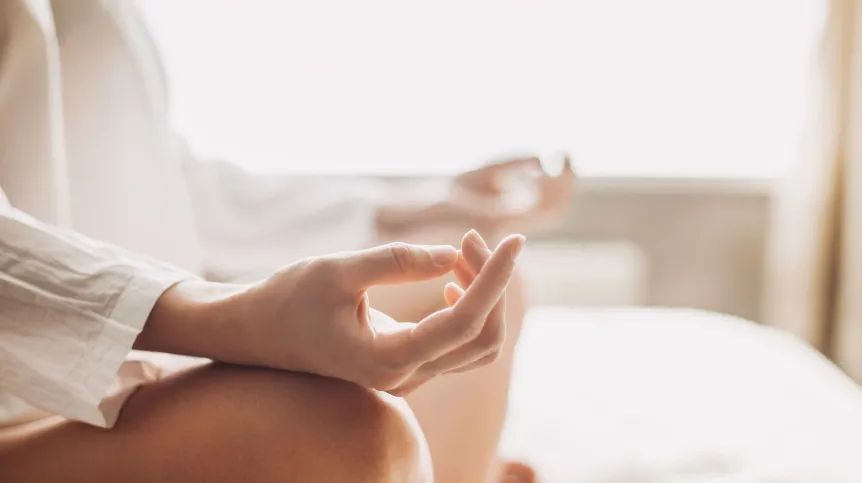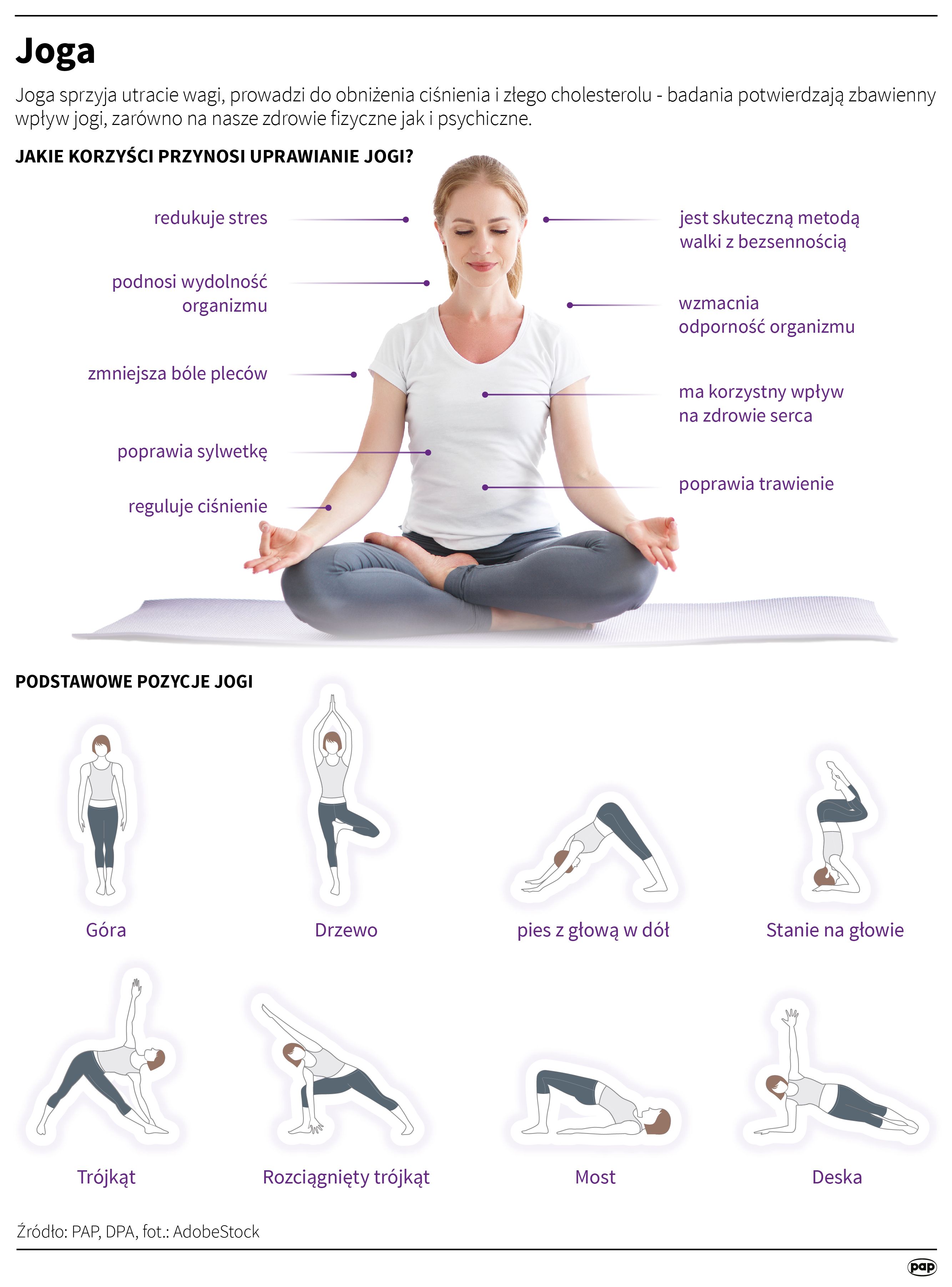
Unlike Indian yoga, academic yoga is based on scientific evidence. It uses the experiences of traditional yoga schools, but with regard to methods and techniques that can be verified in research. It is based on knowledge, not trust in the master, says yoga researcher Professor Janusz Szopa.
In an interview with Science in Poland in recognition of International Yoga Day, Professor Szopa says that yoga is a great tool to improve physical and mental well-being.

'There is plenty of specific evidence,’ he says. ‘We know how the human physical body reacts to yoga (improved flexibility, fitness, balance) and how the mental state reacts (calming down). It is a form of taking care of yourself, which is definitely worth supporting.’
He adds that it is worth paying attention to who yoga is practiced with and what one wants to achieve by practicing it, and that in order to do this, you should have some knowledge.
'In academic yoga, we do not accept anything on faith. It is firmly embedded in science, in evidence, legislation even. An unverified message has no right to be here. We try to measure everything, study and verify. That is why there are people who accuse us of stripping yoga of its mysticism. But we do not limit people's ability to fantasise and have the spiritual experience that they want; we ourselves try to walk on solid ground, approach yoga through scientific knowledge’, says Szopa.
The roots of traditional Indian yoga, which was born thousands of years ago, were also secular. 'The oldest texts found on this subject show that it was a completely non-mystical trend of working on yourself. The sheath of spirituality, mysticism and the cult of the master was added over time', says Szopa.
'Our programme is based on traditional Indian yoga, but only those parts that can be supported by scientific research. That is, we do asanas as well as breathing and relaxation exercises, which we know to really work well on human health, because we have verified it with biomechanical studies, and not because some master from India once told us to do them.
'In short, we use science, while the master's message is used at the Indian school of yoga. We rely on research, they rely on trust. Modern science knows more than a single person and we should not forget that', he adds.
Referring to examples of Copernicus or Einstein, Szopa continues: 'They made breakthroughs, but to this day scientists study and verify their discoveries, introduce corrections and thus broaden the knowledge. This is the progress. This is also the case in academic yoga: we recognise and cultivate what Indian masters who created this system invented, but we know that they also can, and even should be improved upon and verified. And this is not done in the Indian school. There, the only right path is the one designated by the master. It is not allowed to verify it. We, as scientists, cannot agree with this. There must still be a discussion in science’.
The history of academic yoga in Poland goes back over 30 years. The first courses were created in the mid-1990s as part of the Academic Sports Association of the Częstochowa University of Technology. Soon, Universities of Physical Education in Katowice and Warsaw (that has a postgraduate course in 'Relaxation and Yoga' at the Faculty of Rehabilitation) became interested, as did the Jan Długosz University in Częstochowa and other centres.
In 2001, academic yoga obtained the approval of the then Ministry of National Education to conduct instructor courses, followed by the approval of the Ministry of Sport and Tourism. It is also classified in the Polish Monitor as a separate training system. As part of it, additional specialisation courses are also created, e.g. oncoyoga, yoga for children or yoga for seniors, and many related subjects for students of various fields of study.
The main assumption of academic yoga is a health-promoting effect, which, according to Szopa, distinguishes it from some schools of Indian yoga. 'Pro-health activity means that exercises and range of motion must be such that they do not cause posture defects or bodily injury. For example, we know from the biomechanics of movement that a multi-minute sitting in some asanas is not healthy, because it can lead to varus knees, etc. Meanwhile, walking through traditional yoga schools you can see how many musculoskeletal system defects are perpetuated by them. This is because a very flexible guru invented a form of exercise for himself years ago, and people from our culture and civilization, trusting him completely, transferred it here. And we, having verified this exercise in the biomechanics laboratory, counting the forces and loads that act on the joints, see that this should not be practiced', Szopa says.
Referencing a study conducted a few years ago, which showed that in some Polish yoga schools over 50 percent of students suffered an injury during classes, Szopa say: This is unacceptable. In academic yoga, we have whole teams of professionals from many different fields that ensure it does not happen. We have sports experts, physiologists and physiotherapists, physicists, sociologists, historians, researchers of Eastern culture. This is the academic approach. We make sure that yoga is the result of three things: traditional asana, biomechanics and physiotherapeutic knowledge', he says.
Professor Szopa is a mathematician and specialist in the use of mathematical methods in technical sciences and management, as well as a specialist in learning about physical culture. At the Częstochowa University of Technology he was the rector, vice-rector, dean of the Faculty of Management, director of the Institute of Mathematics and Computer Science, head of the Department of Relaxation Techniques and Yoga, and at the University of Physical Education in Katowice - dean of the Faculty of Sport and Tourism Management, head of the Department of Sport and Tourism Management and the head of the Didactic Team of Relaxation Techniques and Yoga.
He is a co-creator of academic yoga and head of postgraduate studies in 'Relaxation and Yoga' at the University of Physical Education in Warsaw. For his activities he was awarded the Knight's Cross of the Order of Polonia Restituta and the Golden Badge of the Minister of Sport 'For Merit to Sport'. He has received a prize for the Best Professor of the University of Physical Education in Katowice. He has international yoga teacher diplomas according to the Iyengar and Shivananda methods; he is an instructor of relaxation, yoga and kinesypsychoprophylaxis. (PAP)
PAP - Science in Poland, Katarzyna Czechowicz
kap/ zan/ bar/ amac/
tr. RL













